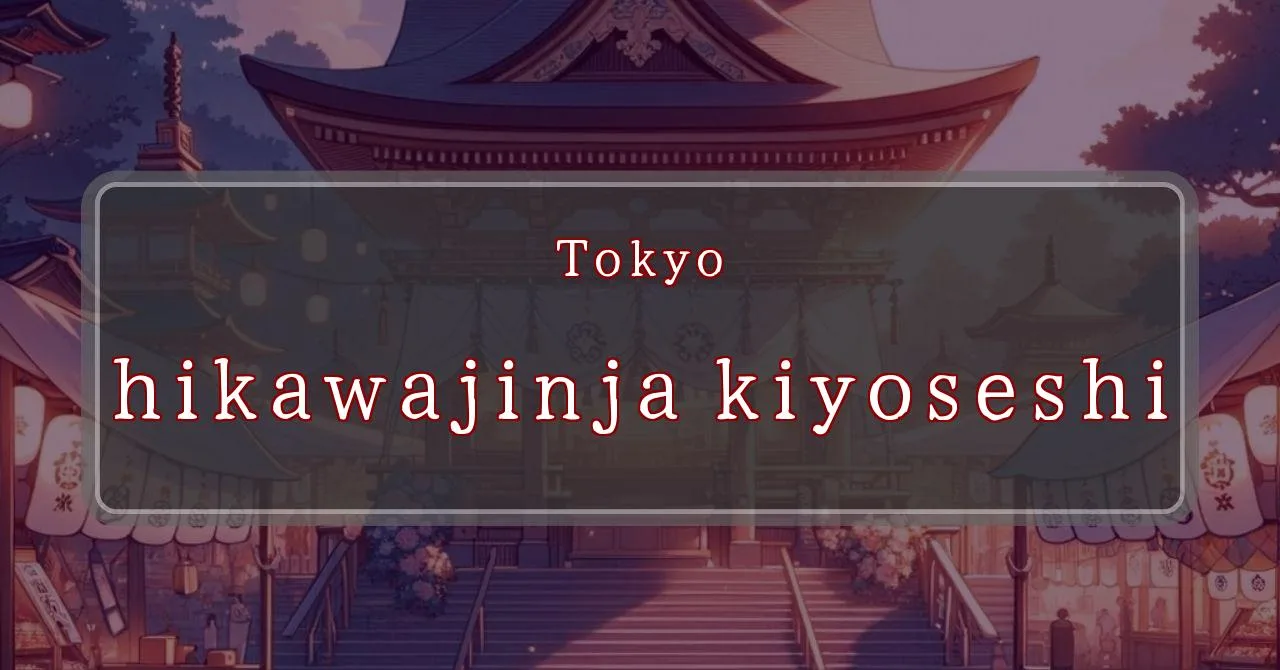Enchanting shrine festival with illuminated deities
Basic Information
Hikawa Shrine is a Shinto shrine located in Kiyose City, Tokyo, Japan. It is dedicated to the god Susanoo-no-Mikoto, the god of storms and the sea.
- Address: 2-1386 Nakasato, Kiyose-shi, Tokyo 204-0003
- Phone Number: 042-493-5211
- Access: 17-minute walk from Kiyose Station
- Festival Days: April 28th, 2024
Main Events and Attractions of the Festival
The Hikawa Shrine Festival is an annual event that takes place on April 28th. The festival features a variety of events and attractions, including:
Mikoshi Procession
The highlight of the festival is the mikoshi procession. A mikoshi is a portable shrine that is carried through the streets by a group of people. The mikoshi is believed to be the temporary dwelling of a deity, and the procession is a way to show respect to the deity and to ask for blessings.
Kagura Performance
Kagura is a traditional Japanese dance that is performed at Shinto shrines. The dance is said to have originated in ancient times, and it is believed to have the power to purify the body and mind. During the Hikawa Shrine Festival, kagura is performed by a group of young women who are dressed in traditional costumes.
Food Stalls
A variety of food stalls are set up at the festival, selling a variety of traditional Japanese foods, such as yakitori, takoyaki, and okonomiyaki. There are also a number of stalls selling souvenirs and crafts.
Bon Odori
Bon Odori is a traditional Japanese dance that is performed during the Obon festival. The dance is said to welcome the spirits of the dead back to the world of the living. During the Hikawa Shrine Festival, Bon Odori is performed by a group of people who are dressed in traditional costumes.
Blessings and Deities
Hikawa Shrine is dedicated to Susanoo-no-Mikoto, the god of storms and the sea. Susanoo-no-Mikoto is also known as the god of agriculture, business, and protection against evil. He is a powerful and popular deity in Japan, and many people come to Hikawa Shrine to pray for his blessings.
- Susanoo-no-Mikoto: God of storms, sea, agriculture, business, and protection against evil
- Popular deity in Japan
- People come to Hikawa Shrine to pray for blessings
Origin and History
The origins of Hikawa Shrine are unknown, but it is believed to have been founded in the 16th century. The shrine was originally located in a different part of Kiyose City, but it was moved to its current location in 1872. Hikawa Shrine has been a popular place of worship for centuries, and it continues to attract many visitors today.
- Origins unknown, believed to be founded in 16th century
- Originally located in a different part of Kiyose City
- Moved to current location in 1872
- Popular place of worship for centuries
Tips and Notes for Visitors
If you are planning to visit Hikawa Shrine, here are a few tips and notes:
- The shrine is open every day from 9:00 AM to 5:00 PM.
- Admission is free.
- There is a parking lot available for visitors.
- The shrine is a popular tourist destination, so it can be crowded during peak times.
- If you are visiting during a festival, be sure to check the schedule of events.
Parking Information
There is a parking lot available for visitors to Hikawa Shrine. The parking lot is located next to the shrine, and it can accommodate up to 50 cars. The parking fee is 500 yen per day.
- Parking lot available for visitors
- Located next to the shrine
- Can accommodate up to 50 cars
- Parking fee: 500 yen per day
Popular Stalls and Food Carts in Recent Years
| Type of Stall | Description |
|---|---|
| Takoyaki | A staple at Japanese festivals. Characterized by a crispy outside and a creamy inside. |
| Jaga Butter | A simple yet popular snack of hot potatoes lavishly topped with melted butter. |
| Baby Castella | Small castella cakes, sweet and fluffy treats enjoyed by children and adults alike. |
| Grilled Ayu with Salt | Fresh ayu fish grilled whole with salt, a savory taste of Japanese summer. |
| Shaapin | A unique gourmet item influenced by foreign cuisine, with a chewy skin wrapping the filling. |
| Okonomiyaki | A Japanese grilled dish where you often choose your own ingredients for a personalized flavor. |
| Cotton Candy | A fluffy, sweet snack that’s extremely popular with children. |
| Chocolate Banana | A banana coated in chocolate, a fun and visually appealing dessert. |
| Kushiyaki | Various types of ingredients skewered and grilled, an easy-to-enjoy snack. |
| Yakisoba | Fried noodles mixed with a special sauce, a fast food favorite in Japan. |



